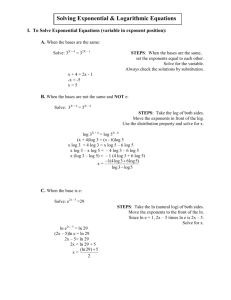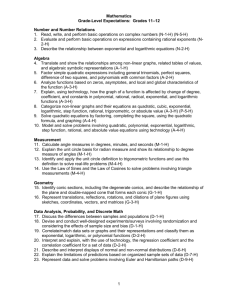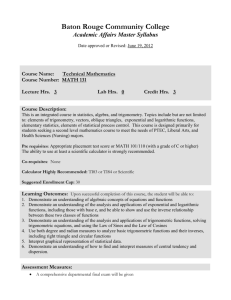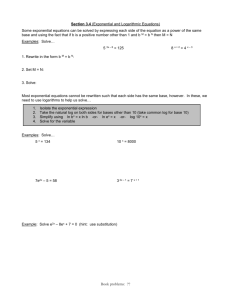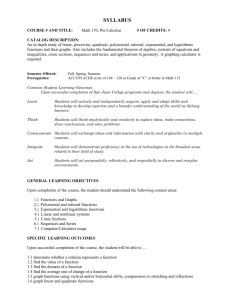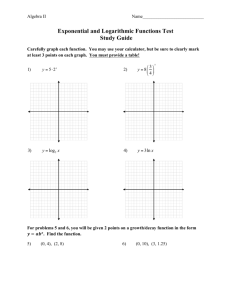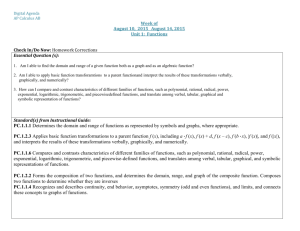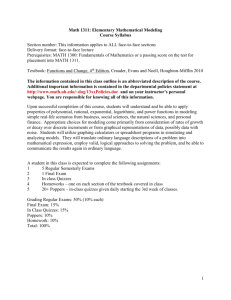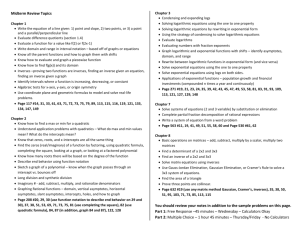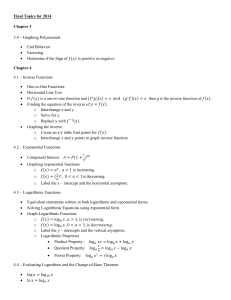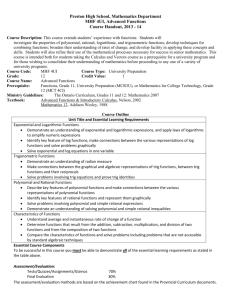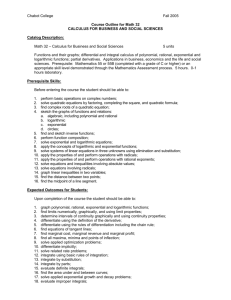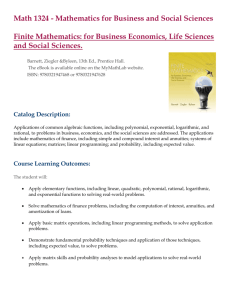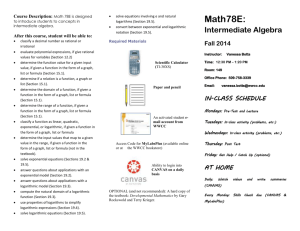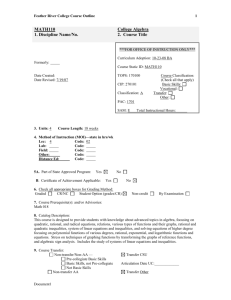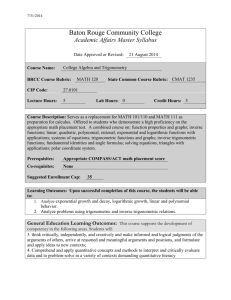Pre-calculus Final Exam Review Date: Thursday December 17, 8
advertisement
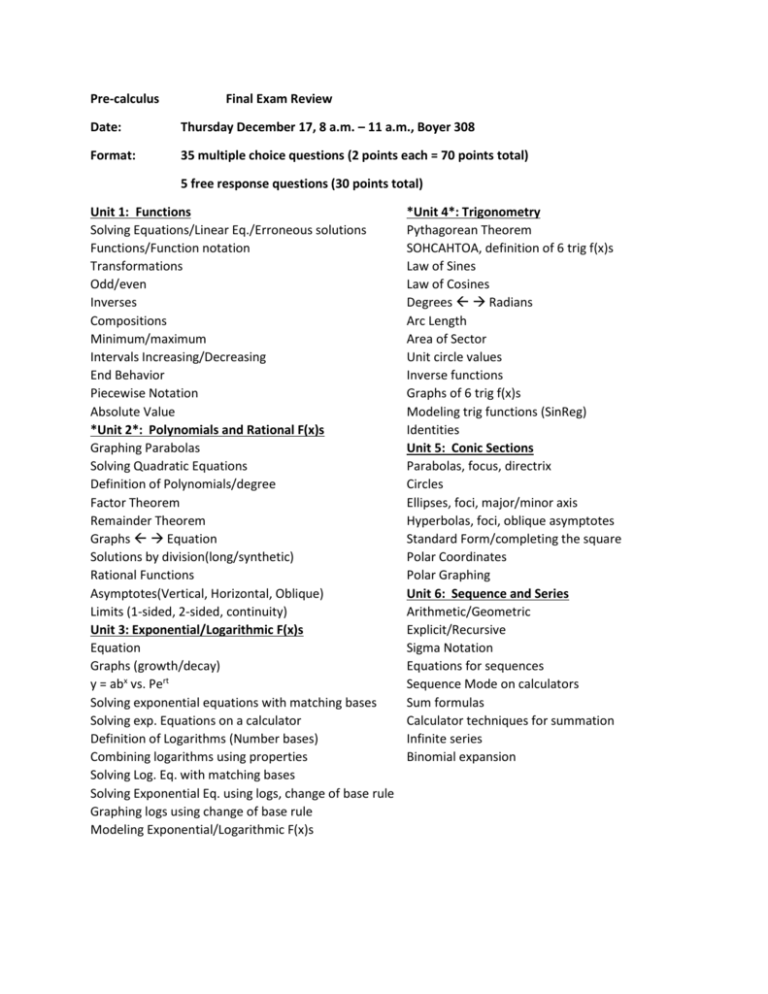
Pre-calculus Final Exam Review Date: Thursday December 17, 8 a.m. – 11 a.m., Boyer 308 Format: 35 multiple choice questions (2 points each = 70 points total) 5 free response questions (30 points total) Unit 1: Functions Solving Equations/Linear Eq./Erroneous solutions Functions/Function notation Transformations Odd/even Inverses Compositions Minimum/maximum Intervals Increasing/Decreasing End Behavior Piecewise Notation Absolute Value *Unit 2*: Polynomials and Rational F(x)s Graphing Parabolas Solving Quadratic Equations Definition of Polynomials/degree Factor Theorem Remainder Theorem Graphs Equation Solutions by division(long/synthetic) Rational Functions Asymptotes(Vertical, Horizontal, Oblique) Limits (1-sided, 2-sided, continuity) Unit 3: Exponential/Logarithmic F(x)s Equation Graphs (growth/decay) y = abx vs. Pert Solving exponential equations with matching bases Solving exp. Equations on a calculator Definition of Logarithms (Number bases) Combining logarithms using properties Solving Log. Eq. with matching bases Solving Exponential Eq. using logs, change of base rule Graphing logs using change of base rule Modeling Exponential/Logarithmic F(x)s *Unit 4*: Trigonometry Pythagorean Theorem SOHCAHTOA, definition of 6 trig f(x)s Law of Sines Law of Cosines Degrees Radians Arc Length Area of Sector Unit circle values Inverse functions Graphs of 6 trig f(x)s Modeling trig functions (SinReg) Identities Unit 5: Conic Sections Parabolas, focus, directrix Circles Ellipses, foci, major/minor axis Hyperbolas, foci, oblique asymptotes Standard Form/completing the square Polar Coordinates Polar Graphing Unit 6: Sequence and Series Arithmetic/Geometric Explicit/Recursive Sigma Notation Equations for sequences Sequence Mode on calculators Sum formulas Calculator techniques for summation Infinite series Binomial expansion Tables: Pattern for each type of function Linear (common difference = slope) x y -2 11 -1 8 0 5 1 2 2 -1 3 -4 4 -7 5 -10 2 15 3 28 4 45 5 66 Quadratic (2nd common difference is equal, changes direction once) x y -2 3 -1 0 0 1 1 6 Polynomial (Degree = which common difference is equal) x y -2 -20 -1 3 0 2 1 1 2 24 3 95 4 238 5 477 0 4 1 8 2 16 3 32 4 64 5 128 1 0 2 3 3 4.755 4 6 5 6.966 2 -1.902 3 -1.902 4 -1.176 5 0 Exponential (Common ratio) x y -2 1 -1 2 Logarithmic (Slow growth, concave down) x y -2 Error -1 Error 0 Error Trigonometric (Mainly sine/cosine for modeling-periodic) x y -2 1.902 -1 1.176 0 0 1 -1.176 Without doing a regression, decide if this function is linear, polynomial, exponential, logarithmic or trigonometric. Answer yes or no on the 1st blank, then verify why it is/is not that particular type. Width at mid-section 3 Height 4 5 6 7 8 1.688 2.531 3.797 5.695 8.543 12.814 Linear? _____Why?________________________________________________ Polynomial?____Why?__________________________________________________ Exponential?____Why?___________________________________________________ Logarithmic?____Why?___________________________________________________ Trigonometric?____Why?____________________________________________________


